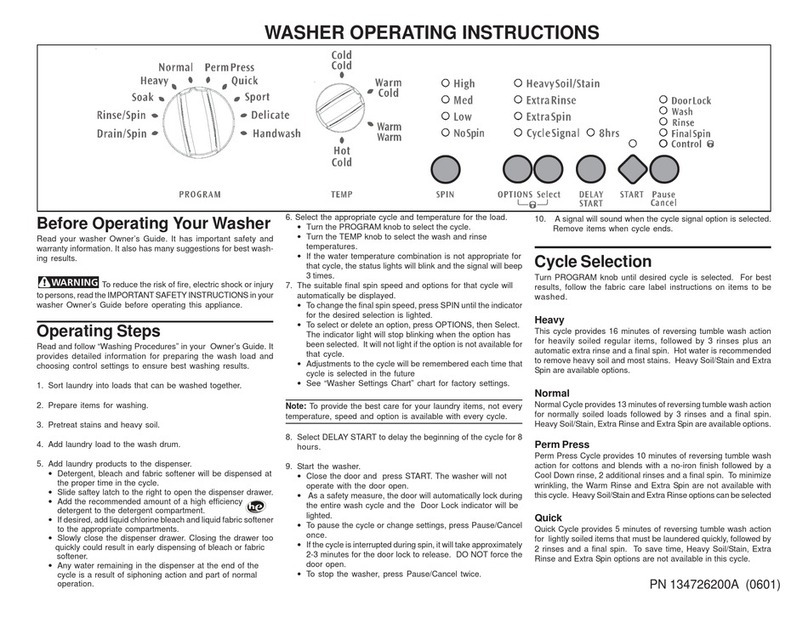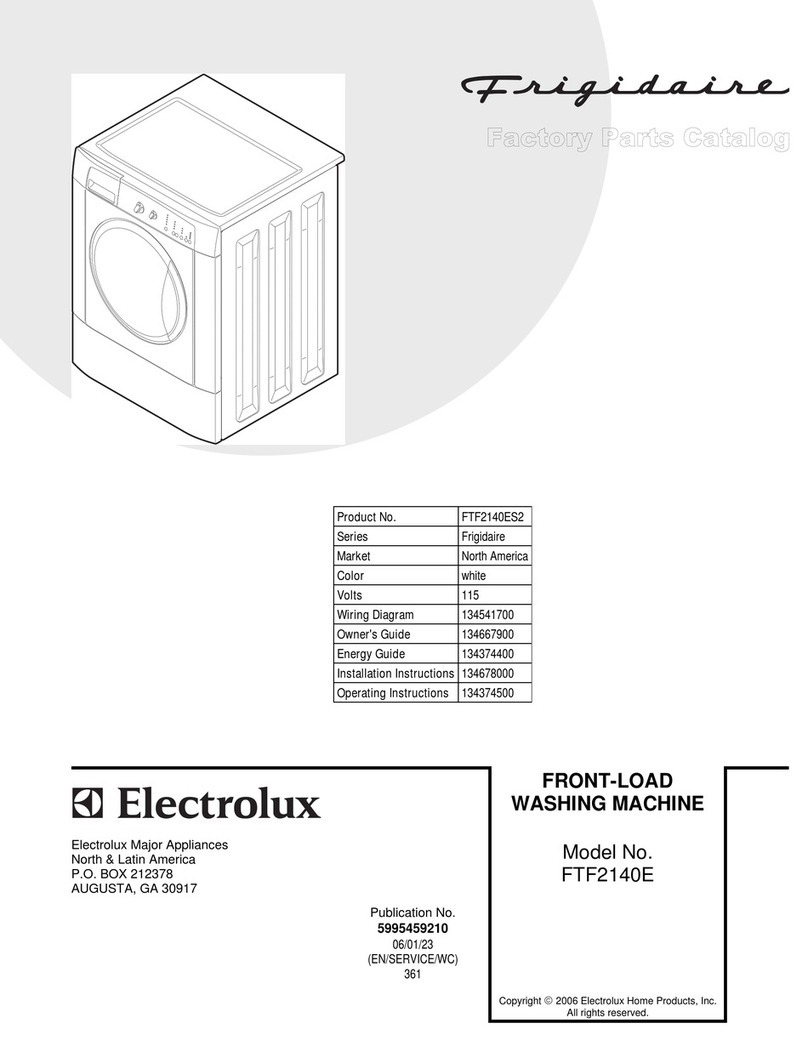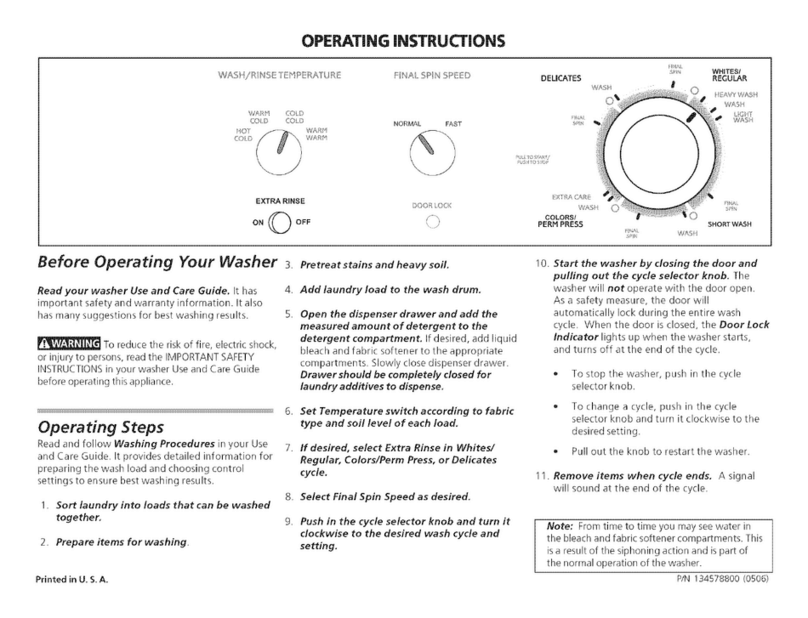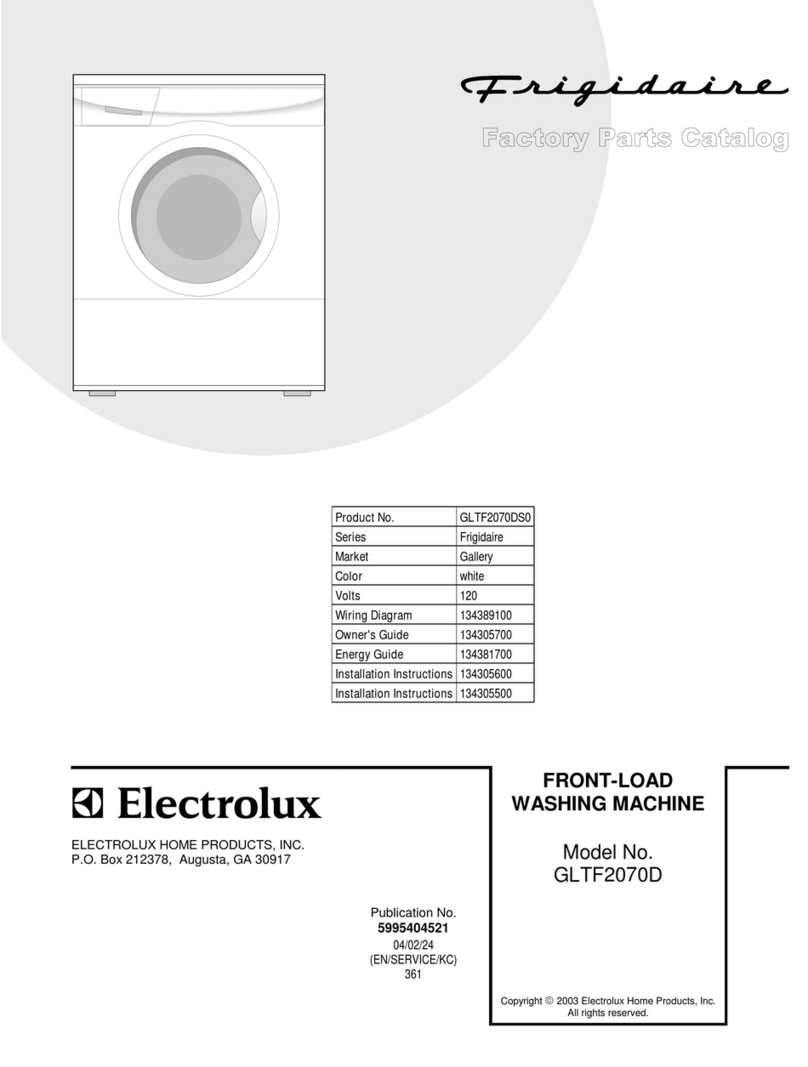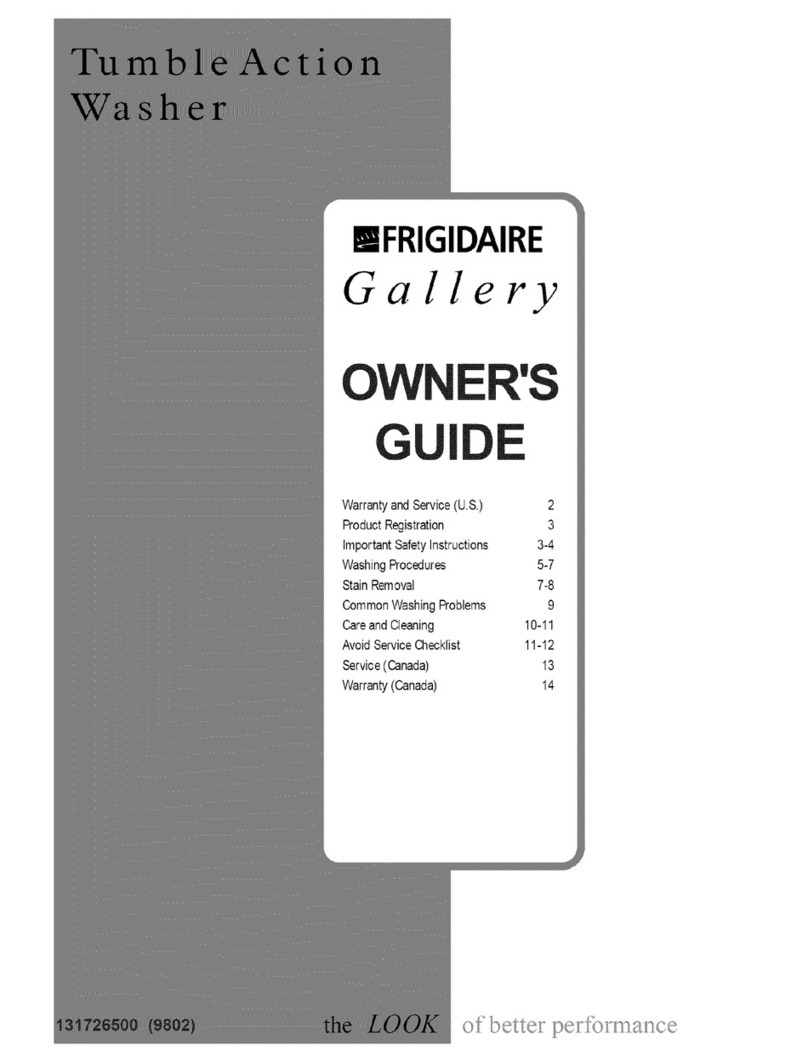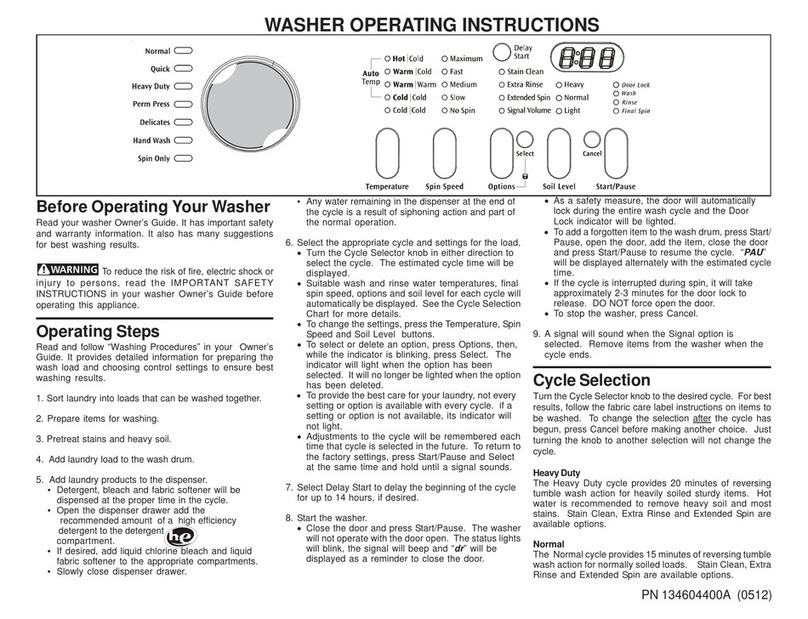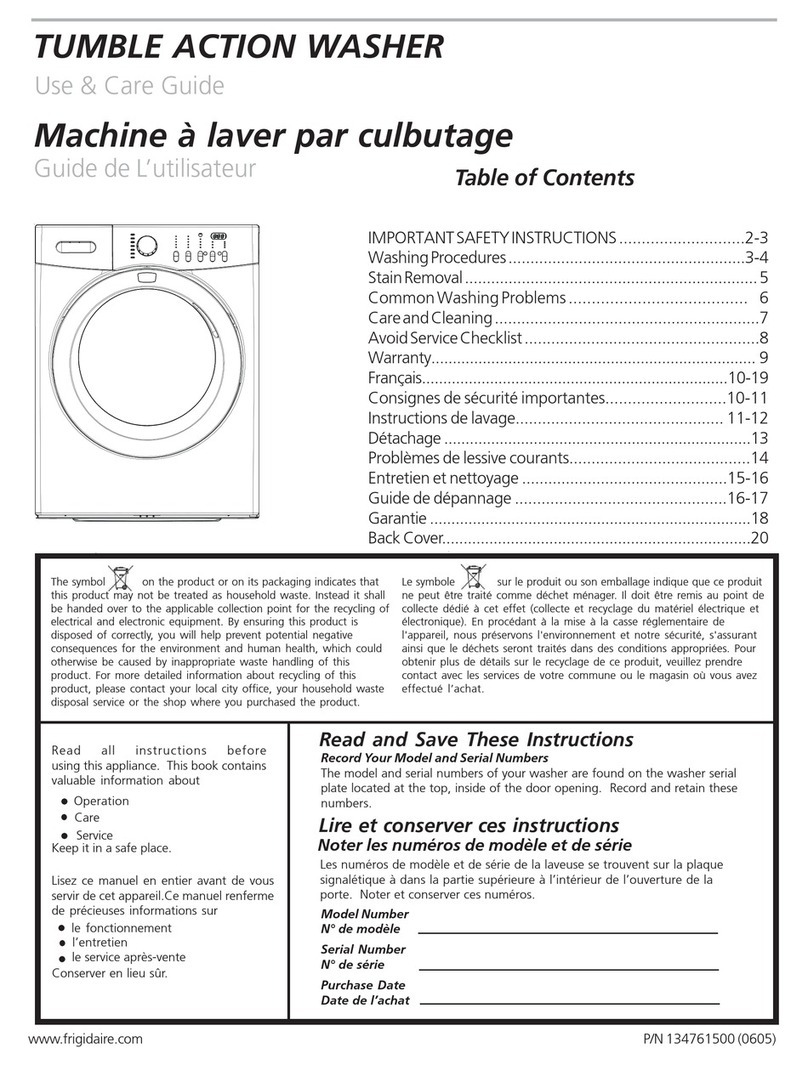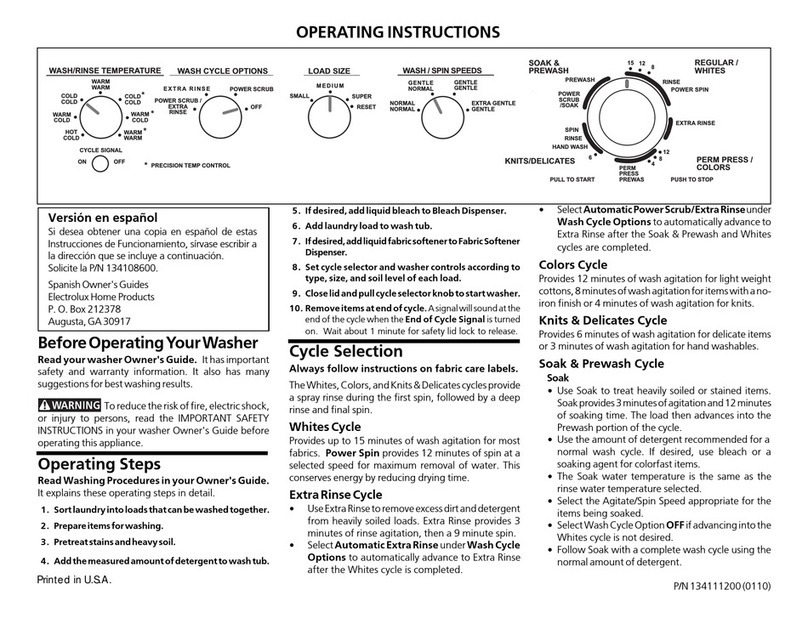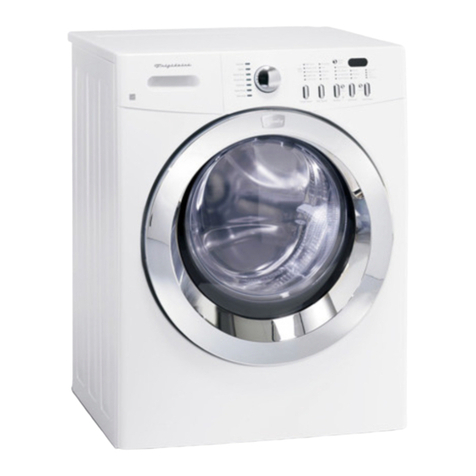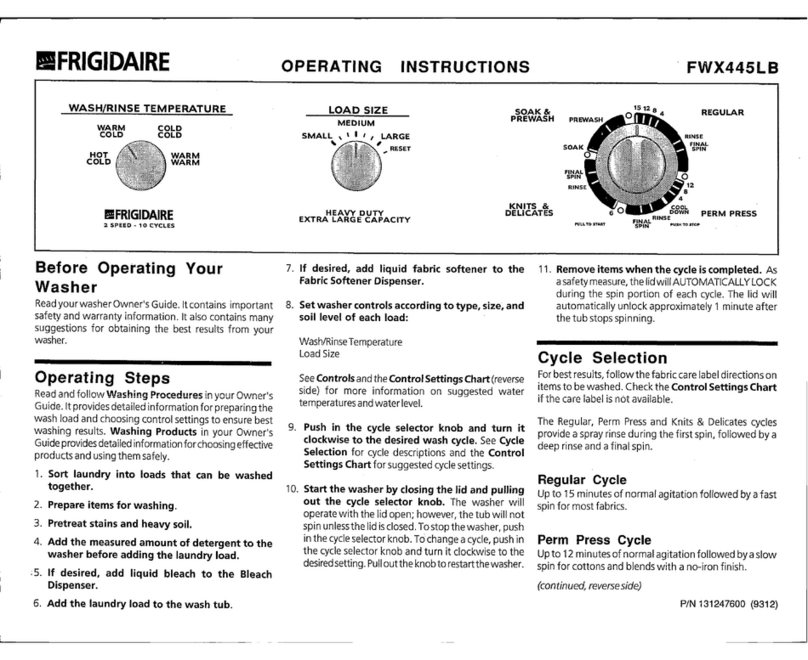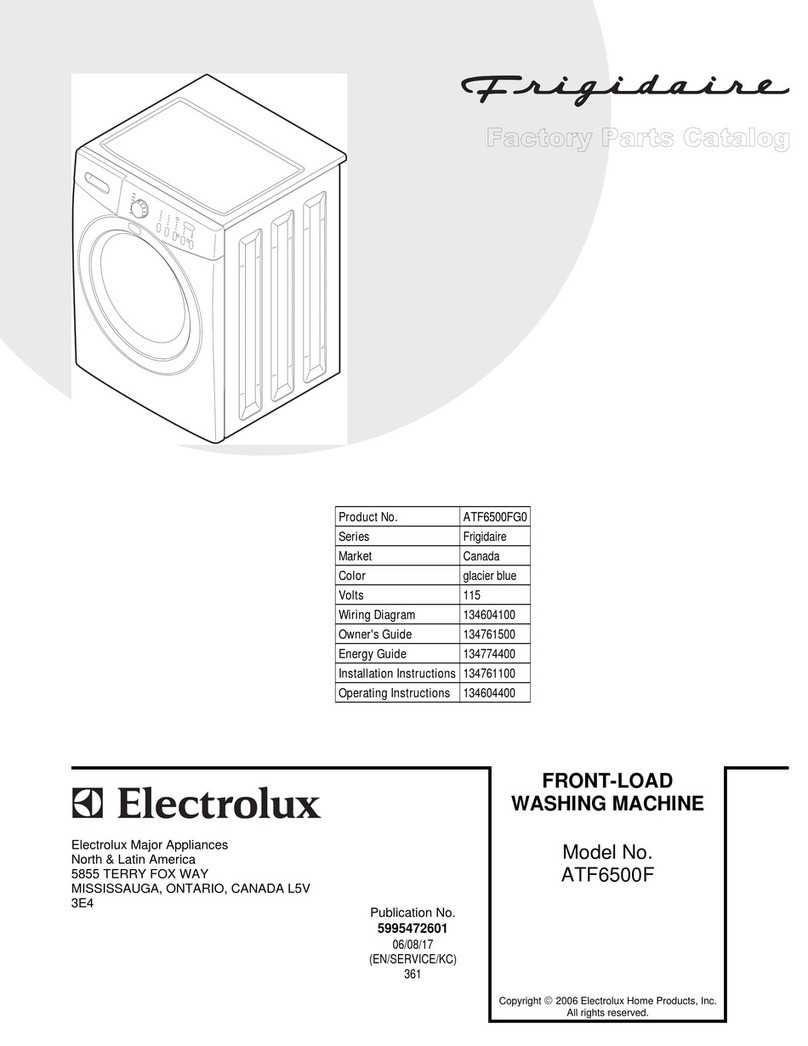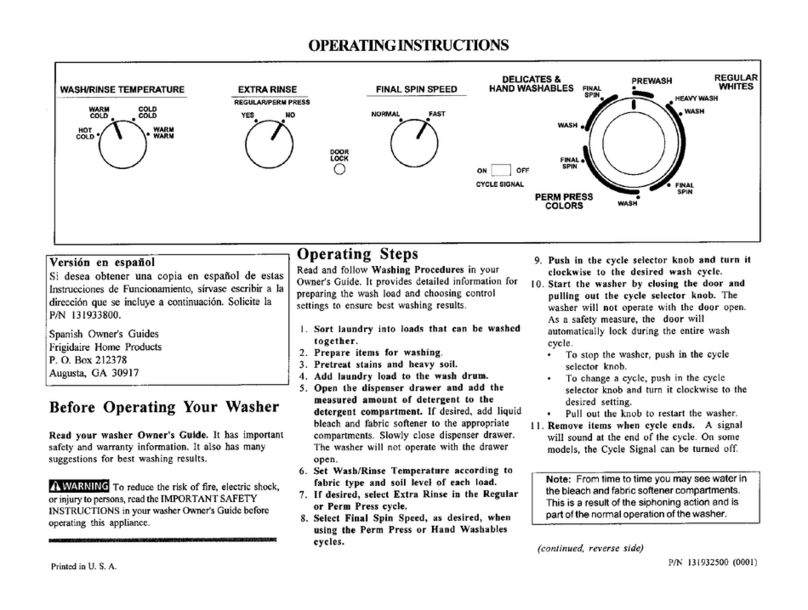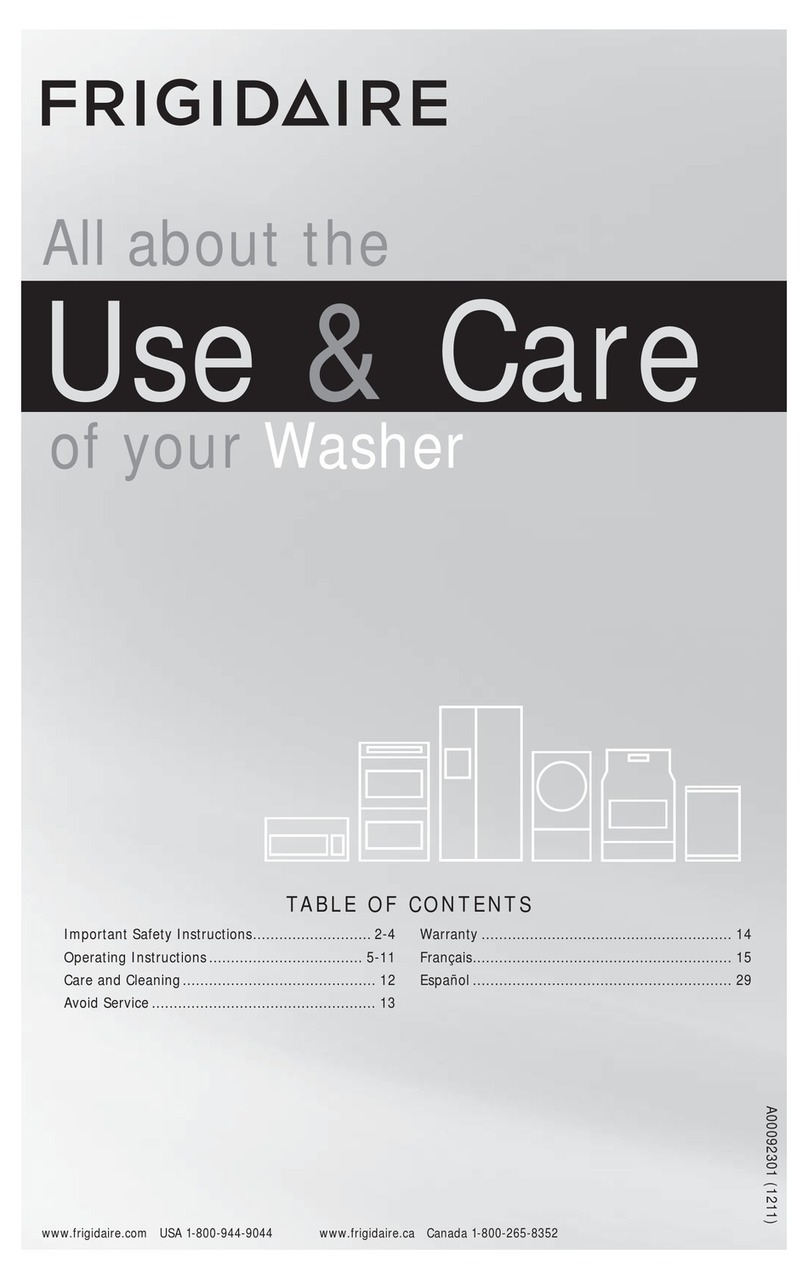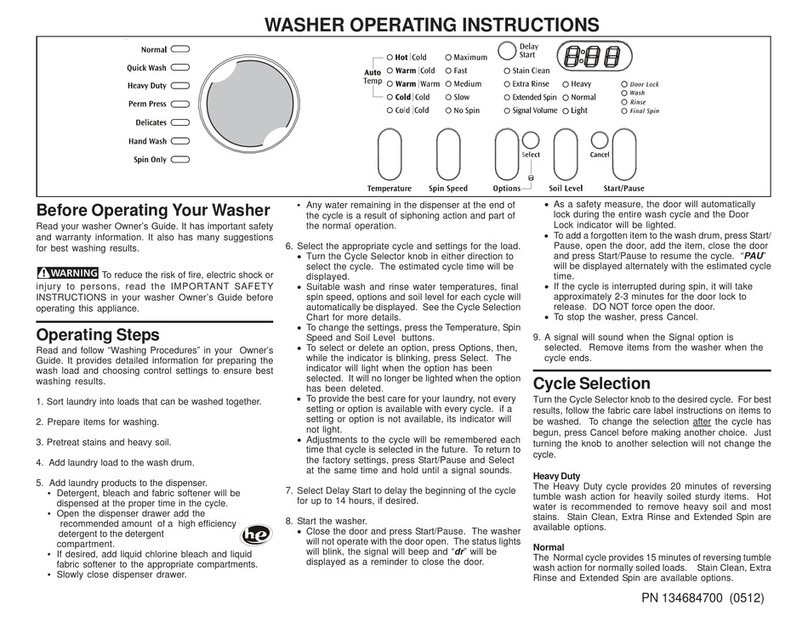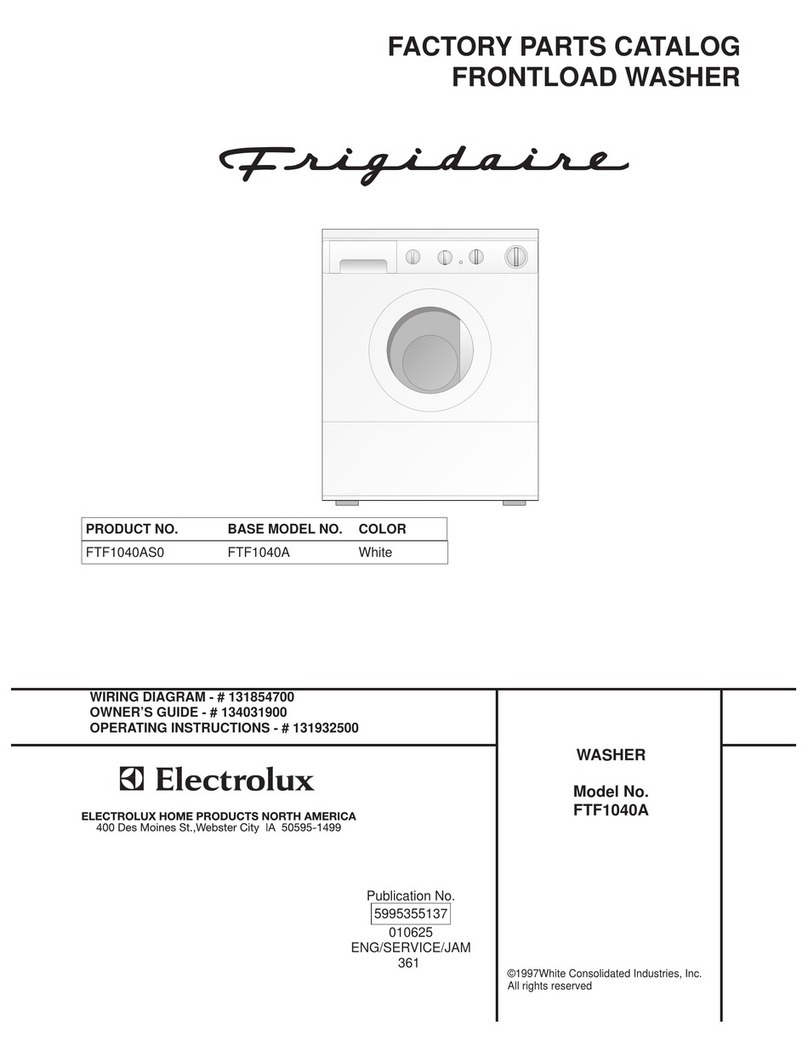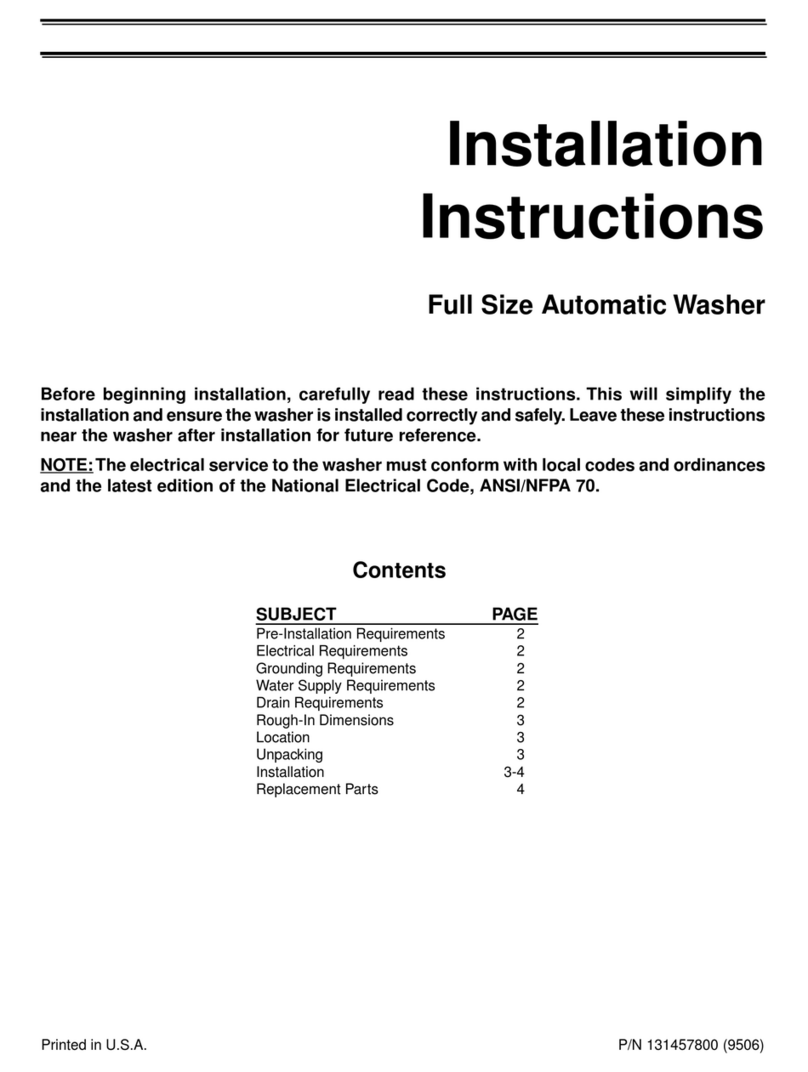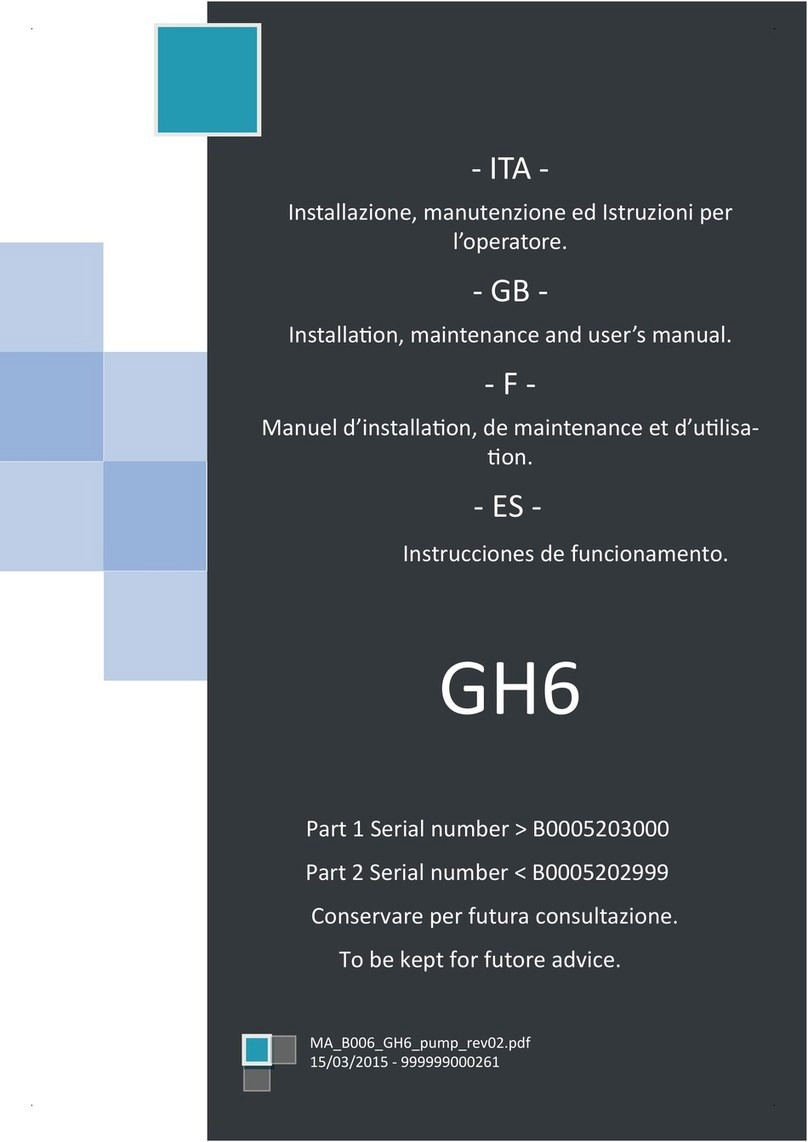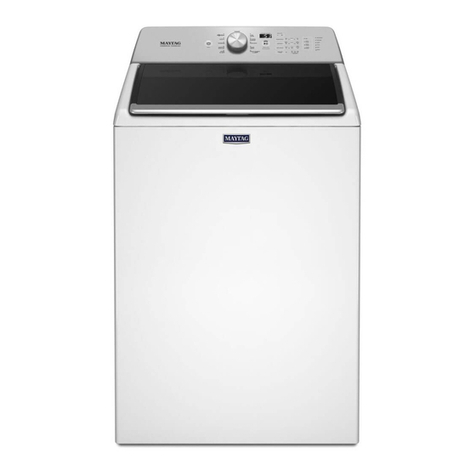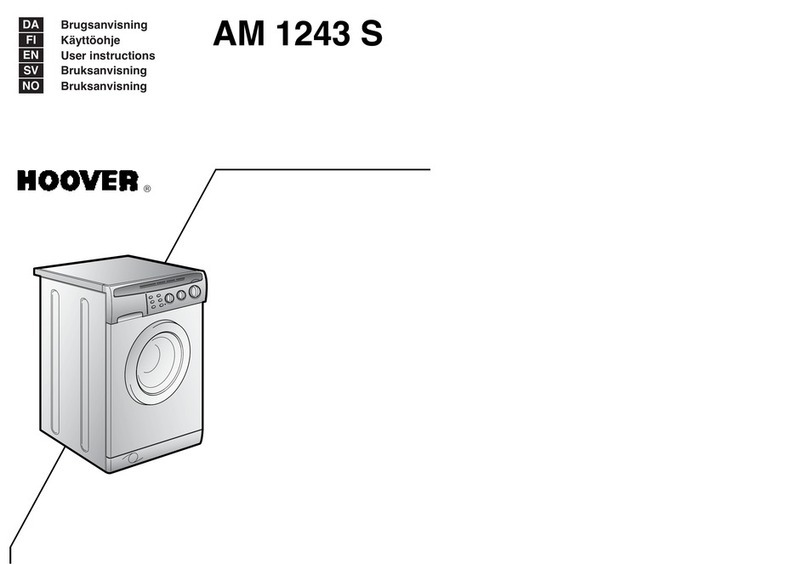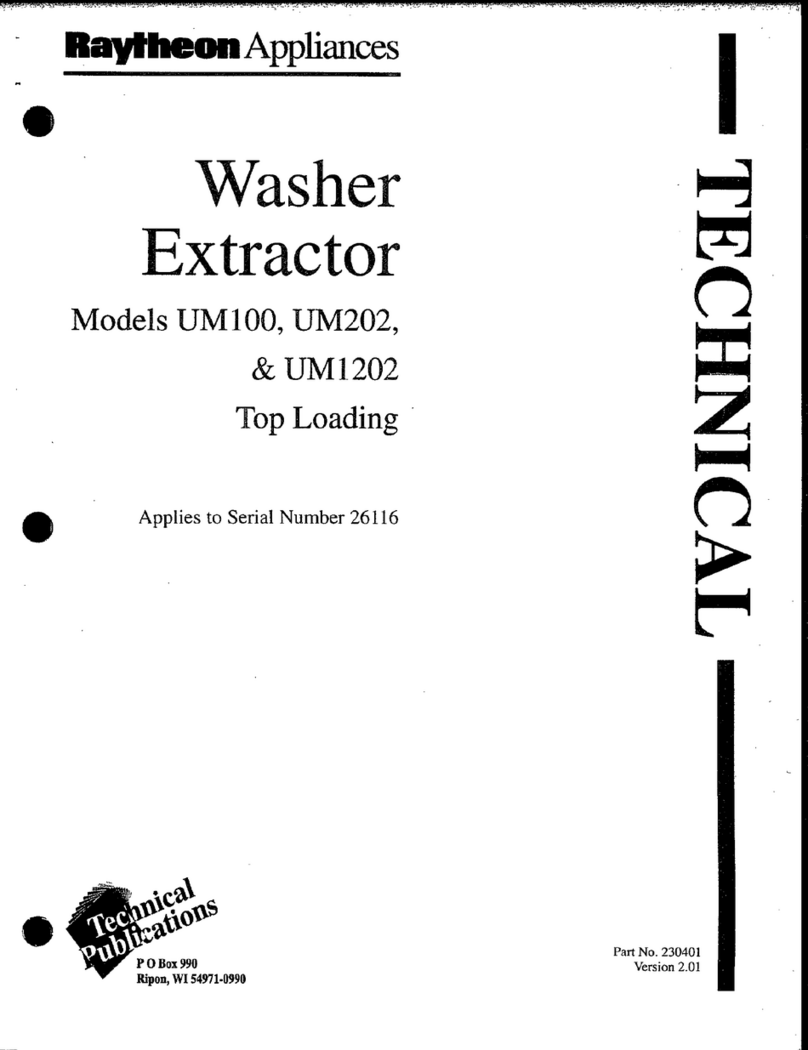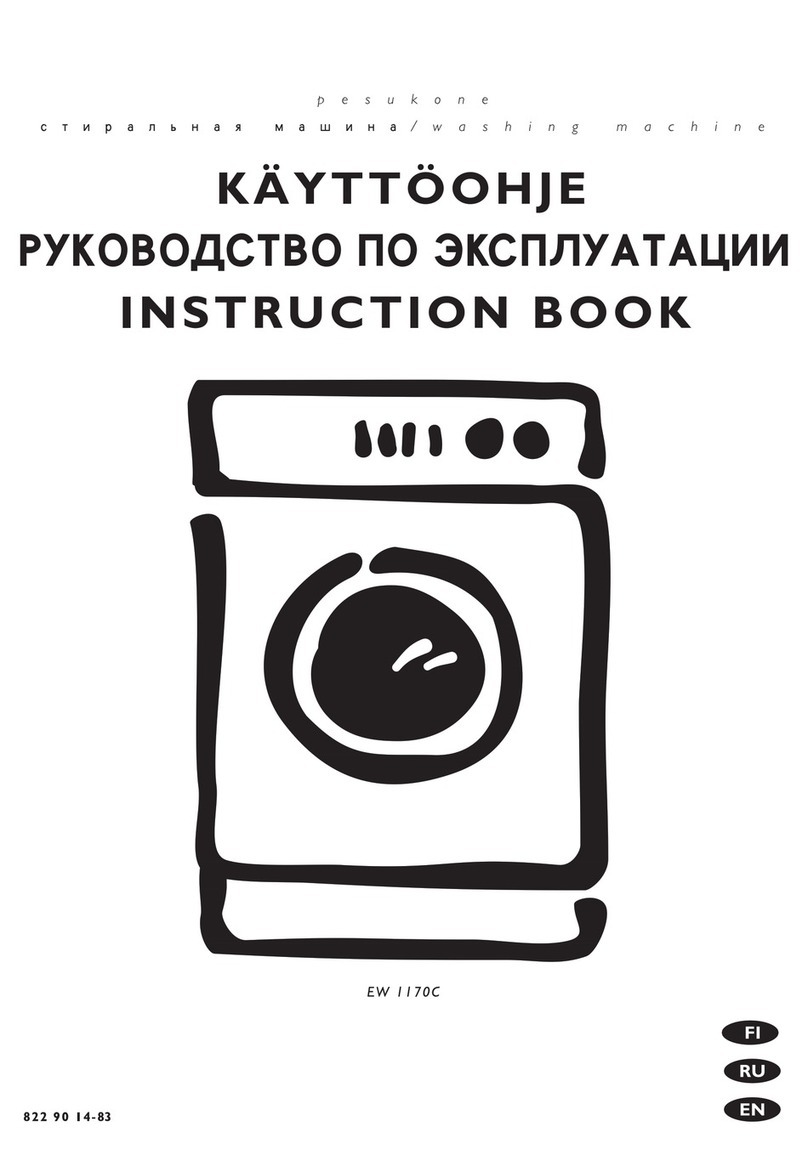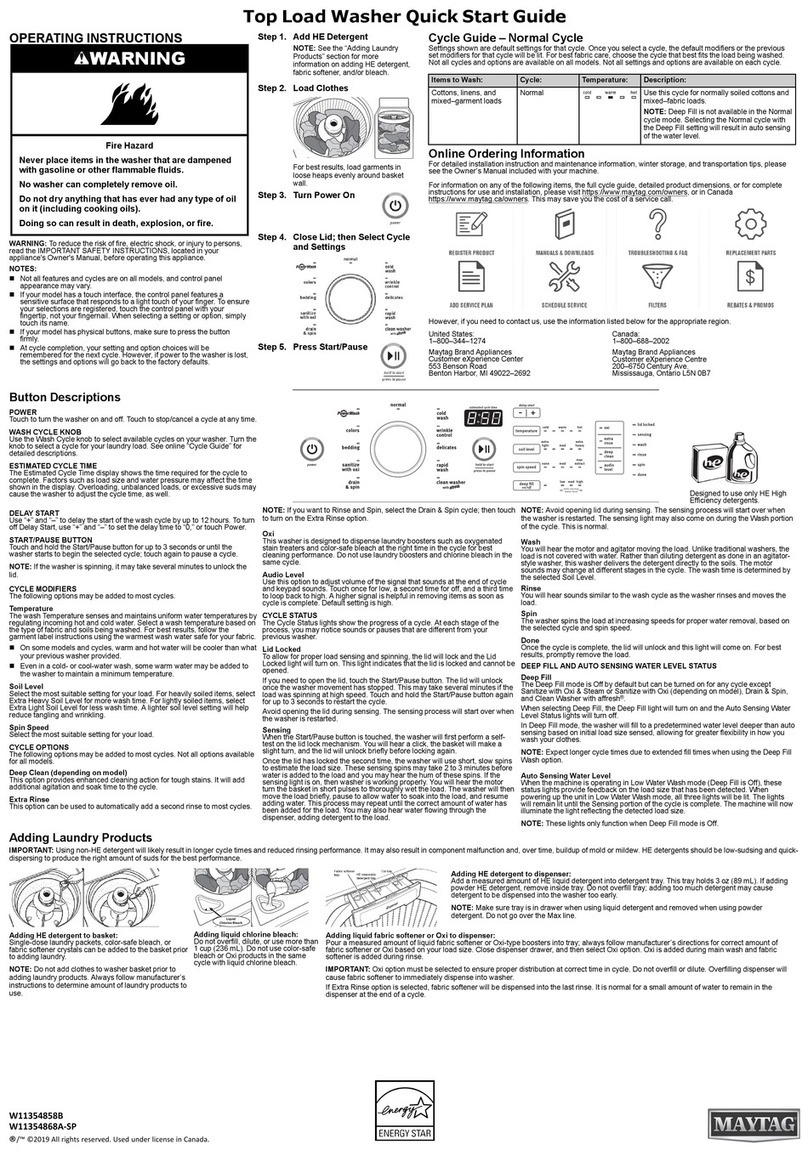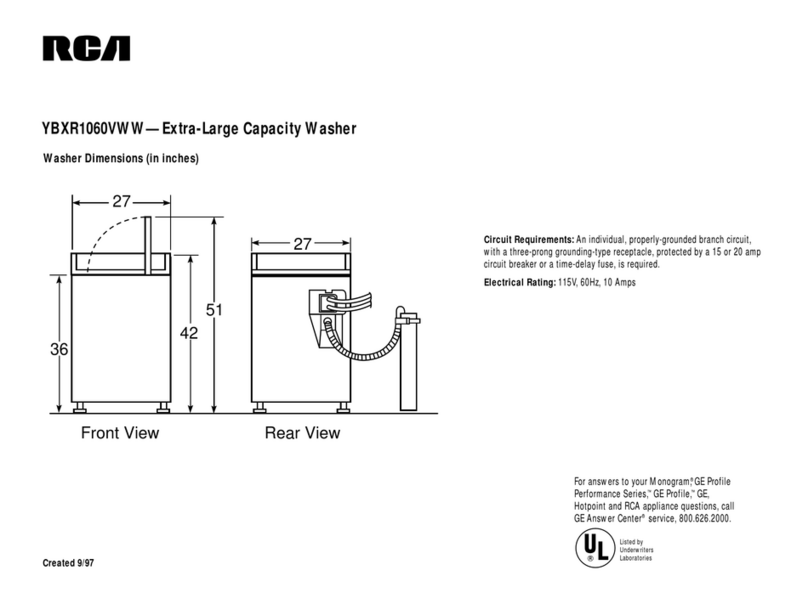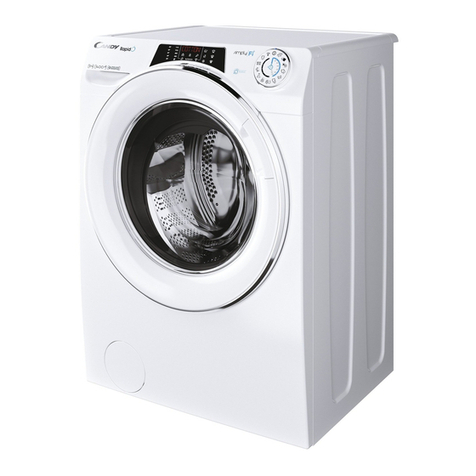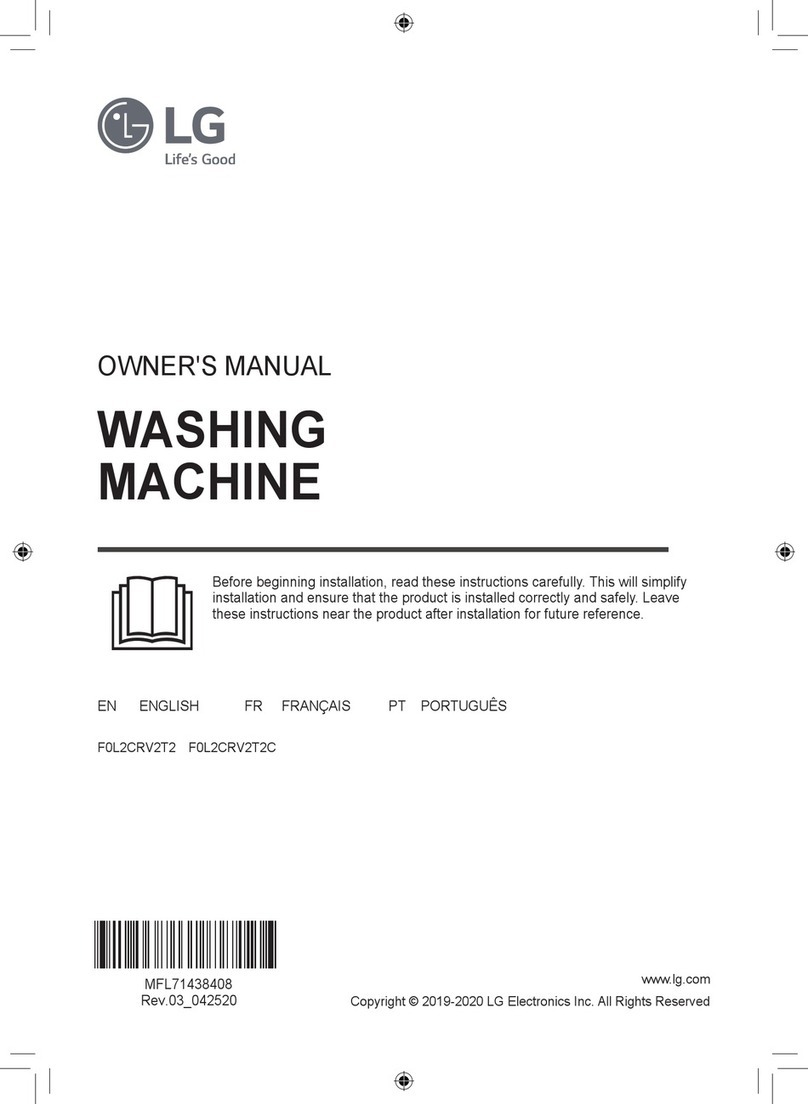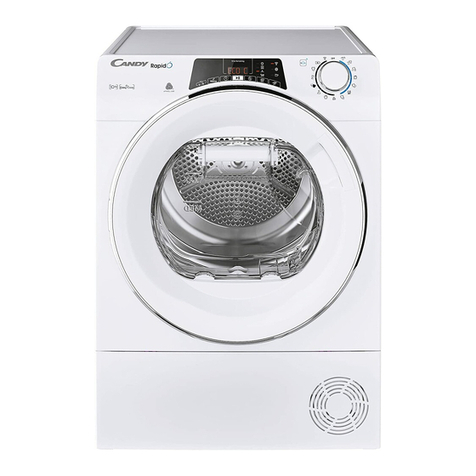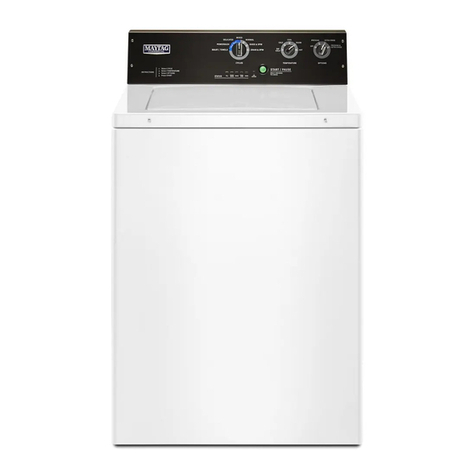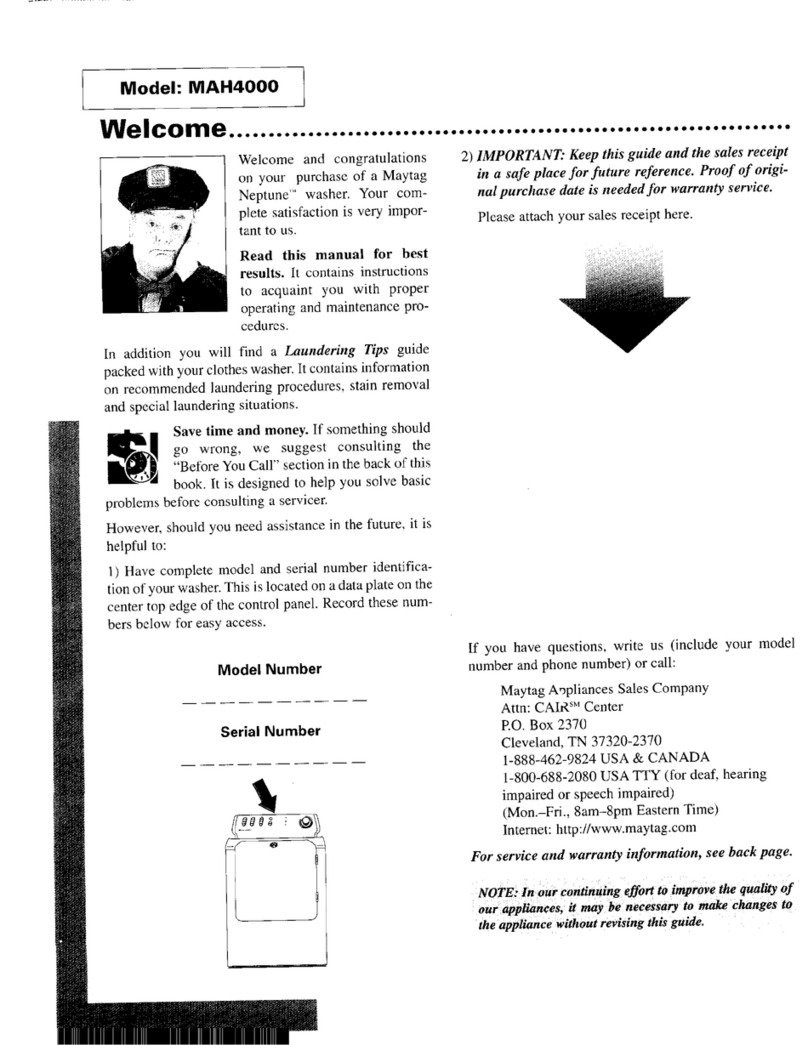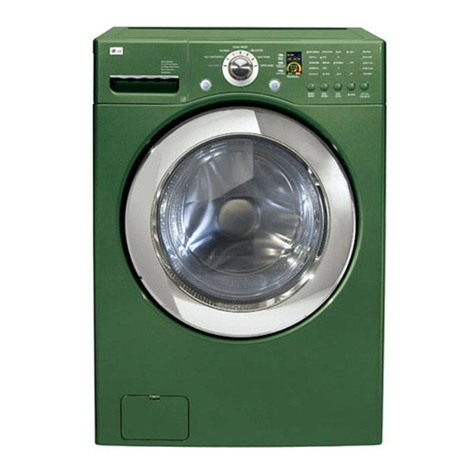CycleSelection (continued)
Prewash
•UsePrewashwhen soaking isnot necessary.Prewash
helpsremove protein-based stainssuchasmilk, grass
and blood. It also helps loosen soilsbefore washing.
Prewash provides 3 minutes of wash agitation.
• Use the amount of detergent recommended for a
normal wash cycle.
• The Prewash water temperature is the same asthe
wash water temperature selected. To avoid setting
protein stains, select cold water.
• Select the Agitate/Spin Speed appropriate for the
items being prewashed.
•Select Wash Cycle Option OFF if advancing into the
Whites cycle isnot desired.
• Follow Prewashwith a complete wash cycteusing the
normal amount of detergent.
Power Scrub Option
Select Power Scrub to automatically advance a load
from the Soak or Prewash setting into the Whites wash
and Extra Rinsecycles.
1. Add the measured amount of detergent to wash
tub, then add wash load.
2.
3.
4.
Select appropriate Wash/Rinse Temperature,
Load Size, and Agitate/Spin Speed.
Select Power Scru b under Wash Cycle Options.
•To use a cycleother than Whites after the Soakor
Prewashsettings, selectOFFand manuallyadvance
cycle selector to cycle desired.
Fill fabric softener dispenser with the
recommended amount of LIQUID detergent.
Add water to bring liquid levelto fill lineon dispenser
cap.
• When selecting Power Scrub, the fabric softener
dispensermust befilled with diluted liquid detergent
at the beginning of the Soak or Prewash setting.
The detergent for the Whites cycle will then be
dispensed after the spin in Prewash.
• DO NOT usepowdered detergent in the dispenser.
• Clean the fabric softener dispenser thoroughly
aftereach use.Fabricsoftenerand liquid detergent
should not be mixed.
5. Setthe cycleselectorat Soakor Prewash and pull
knob to start. The washer will provide Soak or
Prewash asselected. Itthen automatically advances
to the full Whites cycle and Extra Rinsecycle.
Automatic Extra Rinse Option
SelectAutomatic Extra Rinseor Power Scrub/Extra
Rinseto provide anextra rinse at the end of the Whites
cycle.
Controls
Always follow instructions on fabric care labels.
AGITATE/SPIN SPEEDSoffers three agitation speeds
and four combinations of agitation and spin speeds for
any cycle. The following chart suggests agitate/spin
_eedsfor basic fabric types.
Fabric Type Agitate/Spin Speed
Regular Normal/Normal
Perm Press Normal/Normal
Knits Gentle/Normal
Delicates /Washable woolens Gentle/Gentle
Hand washables Extra Gentle/Gentle
WASH/RINSE TEMPERATUREsetswater temperatures
forwashing and rinsing. Selectwash water temperature
according to fibercontent, soilleveland type of detergent.
A cold water rinsesavesenergy and reduces wrinkling.
PrecisionTemp Control
The normal temperature of warm and cold wash water
can be affected by the hot water heater setting and
seasonally low ground water temperatures in some
geographic areas. Since detergents work best in wash
water at a minimum of 65° F, selecta Precision Temp
to regulate the temperature of the warm and cold wash
water in any cycle.
Wash water in the Precision Temp Warm/Cold and
Precision Temp Warm/Warm settings isregulated to
approximately 90° F.and thewash water inthe Precision
Temp Cold/Cold setting isregulated to approximately
70° F. Rinsewater temperatures are not regulated.
The following chart suggests wash/rinse temperatures
for some typical wash loads.
Fabric Type
Heavily soiled white/colorfast
cotton, perm press
Lightly soiled white/colorfast
cotton, perm press
Noncolorfast fabrics, knits,
delicates, hand washables
Washable woolens
Wash/Rinse
Temperature
Hot/Cold
Warm/Cold *
Cold/Cold *
Warm/Warm *
* unregulated or Precision Temp Control
LOAD SIZEsetsthe amount of wash and rinsewater for
the wash load. Select a water levelappropriate for the
load size. There should be enough water for items to
move freely.
•To increase water level after the wash cycle begins,
turn the Load Sizecontrol to Resetand hold. When
water begins to enter the tub, turn the control to the
desired setting.
Energy Saving Tips
• Wash full loads. Oversize loads use extra energy.
Undersize loads waste energy.
• When small wash loads cannot be avoided, use lower
water levels.
• Select the appropriate cycle and time for each load.
Shorten wash times for lightly soiled loads.
• To reduce drying time, select a fast spin speed to
remove more water from heavy items such astowels
and jeans.
•Usewarm water to wash most loads. Limit hot water
washes to heavily soiled and white loads. Use cold
water for lightly soiled items and rinsing.
•Operate the washer in early morning and lateevening
when utility demands are low.
• Follow proper laundry proceduresto avoid rewashing.
P/N134108500(0109)
